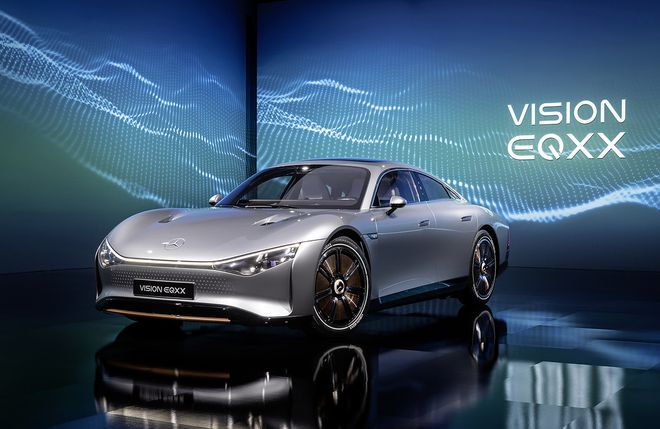Kit takes Yamaha Ténéré 700 back to the 1980s
The Yamaha Ténéré 700 is one of the most awaited motorcycles by Brazilian fans of the tuning fork brand, which has promised it to our market but has not yet made it available here, possibly due to issues involving the emission and noise standards in force in the country. While she doesn't land here, the Yamaha adventurer continues to gain versions and items … Continued
The post Kit takes Yamaha Ténéré 700 back to the 1980s appeared first on Motorcycle Online .
TB Community #102: Uber, ninth digit, Nintendo, PayPal, fees and more
These were the highlights of the TB Community between January 8th and 14th; what is the solution for Uber?
TB Community #102: Uber, ninth digit, Nintendo, PayPal, fees and more
Just like Formula 1, tennis will win a documentary series on Netflix
One of the attractions of the program must be the Djokovic saga in Australia
CT News — iOS 14 without security updates, Nokia G21 and more!

On this Friday's Canaltech News, the five most bombastic news in the technology universe; watch!
Watch the video.
With Sam Sunderland, GasGas wins Dakar Rally for the first time
Briton Sam Sunderland won the Dakar for the second time and won the first title of the race for GasGas, which becomes the sixth brand to win the rally together with KTM (18 victories), Yamaha (9), Honda (7), BMW (6) and Cagiva (2). Champion in 2017 with KTM, the British rider gave himself … Continued
The post With Sam Sunderland, GasGas Wins Dakar Rally for the First Time appeared first on Motorcycling Online .
Mercedes-Benz wants to make electric cars without parts from other companies

Mercedes-Benz is advancing in the electric car market, but understands that it will have natural difficulties to manufacture these cars, notably technological ones. With that in mind, the German giant works to make its future zero-emission models without relying on other suppliers.
- Mercedes-Benz Vision EQXX | Meet the electric car with a range of 1,000 km
- 10 electric cars that will be launched in Brazil in 2022
The manufacturer's idea is that, little by little, all the parts that make up its cars are made in its factories, mainly engines, exchange and other items. According to Markus Schäfer, head of development at Mercedes, the automaker's upcoming electric car platforms are ready for this.
"We want to control the overall system of electric motor, battery and electronics in the best possible way, similar to the way the combustion engine does", revealed Schäfer, in an interview with the German automotive journal Automobilwoche.
–
Canaltech on Youtube: news, product reviews, tips, event coverage and much more! Subscribe to our YouTube channel , every day there's a new video for you!
–

Currently, Mercedes electric cars, such as the EQC and EQS, have batteries from China's CATL, in addition to engines and transmissions from ZF and Valeo Siemens. Recently, a partnership between the automaker was signed with Stellantis and Total Energies for the construction of a battery cell factory, something that is in line with the ideas revealed by Schäfer.
With this change in its production line, Mercedes estimates that its next electric cars will be 100% developed and assembled in its factories and that it will be less affected by possible semiconductor crises, one of the main problems of the automotive industry in the last two years.
The expectation is that this work will get off the ground in 2024.
Read the article on Canaltech .
Trending on Canaltech:
- Sixth mass extinction may already be happening on Earth
- N95 and PFF2 masks: how many times to reuse? Where and how to store?
- Mega ripples have a mathematical pattern capable of "predicting" their behavior
- Omicron transmission period may be longer than imagined
- Netflix releases this week (1/14/2021)
See the 10 cybersecurity trends for 2022

The pandemic popularized the hybrid working model in 2021. At the same time, the vulnerabilities associated with this option have increased ransomware cases. For 2022, the scenario is even more challenging for the cybersecurity of companies of all sizes and sectors.
- 78% consider changing jobs if home office is terminated by employer
- 90% of Brazilian executives are concerned about home office risks
A survey by Lumu Technologies, which specializes in monitoring threats in real time, with leading cybersecurity executives in Latin America shows 10 forecasts for the region this year. “Organizations of all sizes and verticals need effective tools to know the real situation of their cybersecurity”, says Ricardo Villadiego, CEO and founder of Lumu Technologies.

According to him, in this new reality, companies are more exposed to cyberattacks. “You need to consciously and continuously assess the threat to determine when and how systems communicate with a malicious infrastructure,” he explains. See the predictions below!
–
CT on Flipboard : You can now subscribe to Canaltech magazines for free on Flipboard on iOS and Android and follow all the news on your favorite news aggregator.
–
1 – Companies must leave the SIEM
The Security Information and Event Management System (SIEM) has been a part of cybersecurity for over two decades. With new technologies, professionals will begin to wonder if it should continue to be the main part of operations.
2 – Hybrid work is a challenge
Remote working requires extensive, dynamic threat monitoring, as well as the use of more tools—which represent more vulnerabilities. Risk visibility will then be needed more than ever.
3 – Talent war is near
Companies will compete for specialized cybersecurity talent. Tools that make security teams more efficient can help companies deal with this.

4 – Adoption of automated systems
Automating routine cybersecurity tasks is an efficient way to detect and contain them. Integrated tools and coordination between people and technology will be increasingly important for companies of various sizes.
5 – Need for cyber insurance
With organizations increasingly interested in taking out cyber insurance, insurers must impose stricter coverage conditions. Companies will need to demonstrate a robust cybersecurity approach to avoid high prices.
6 – Crime will form new alliances
Criminals will increasingly seek partnerships with those who can facilitate access to the network. Employee participation is expected to increase as the scammers agree to share in the profits.
7 – Ransomware attacks
Data hijacking should now be targeted at smaller targets, such as desktops. Requested payments will be lower, but the scale tends to increase. With more early access availability, malware-as-a-service and ransomware chains will bring more interest to cybercrime.
8 – Sneak Attacks

After high-profile attacks in 2021, gangs specializing in data hijacking, such as Darkside and Revil, disappeared. This is because the response of government agencies has intensified. Many attacks will exploit the zero-day flaw for criminals to secretly infiltrate for ransom.
9 – Supply chains and internal personnel are the weakest links
Supply chains are not very resilient. This ensures that criminals have access to a large number of victims and can bypass the companies' defenses.
10 – Visibility will be key
As cybersecurity systems evolve, network visibility becomes crucial. This will help you detect vulnerabilities quickly as well as gain the information you need to eradicate threats with speed and accuracy.
Read the article on Canaltech .
Trending on Canaltech:
- GitHub lists the 5 most used programming languages in Brazil in 2021
- Benco V80s: privacy-focused cell phone does not have cameras or GPS
- Omicron transmission period may be longer than imagined
- Nokia G21 has leaked specs, with 50 MP camera and 5,050 mAh battery
- 10 ideas for building in Minecraft
Ministry of Health asks Anvisa to release covid-19 self-test
The folder argues that the use of self-tests would be a complementary strategy to the testing plan adopted during the pandemic
Rival of Yamaha Niken? Aprilia prepares 3-wheel motorcycle
There is dispute in the market: Aprilia would be working on a 3-wheel motorcycle to compete with Yamaha Niken. See the details here at MOTORCYCLING!
The post Rival of Yamaha Niken? Aprilia prepares 3-wheel motorcycle appeared first on Motorcycling Online .
Battle Brothers is released for PlayStation and Xbox
PlayStation 4/5 and Xbox One / Series S and X version of Battle Brothers includes all DLC released so far for the SRPG.
The post Battle Brothers is released for PlayStation and Xbox first appeared on Hu3br .